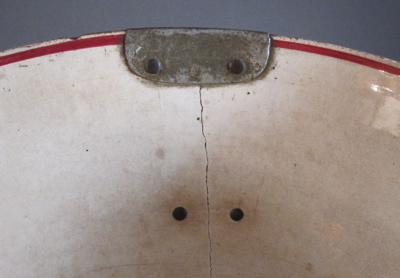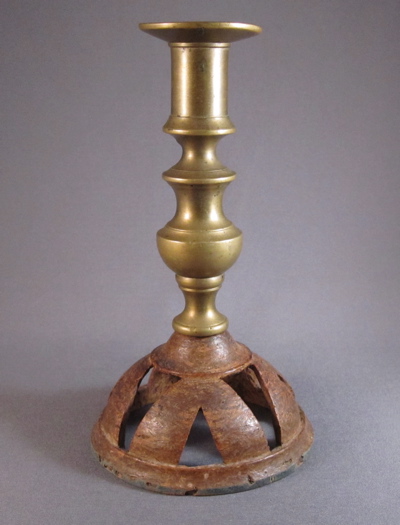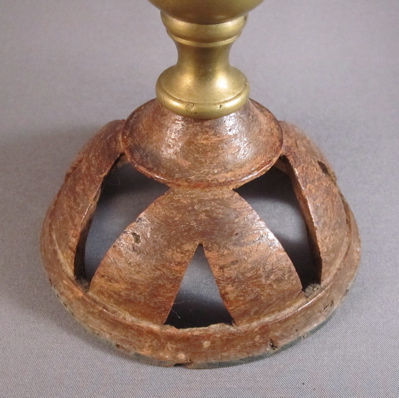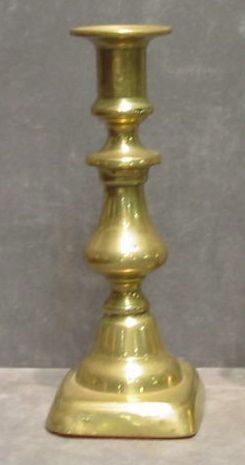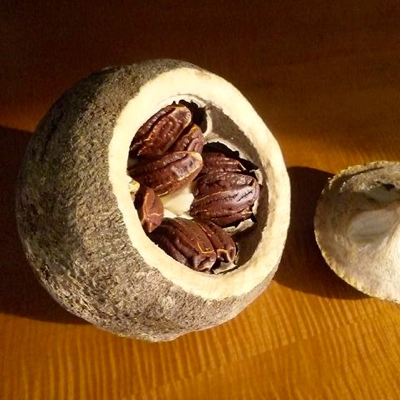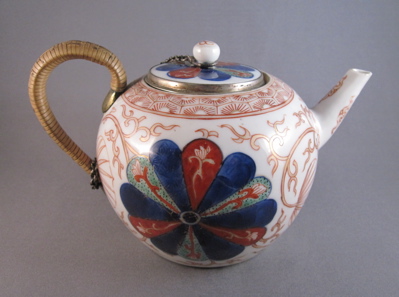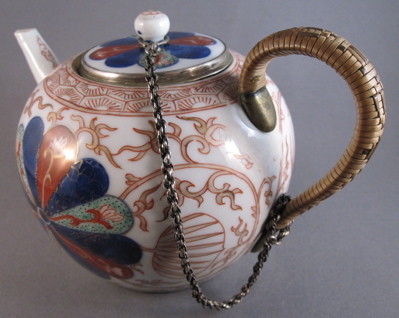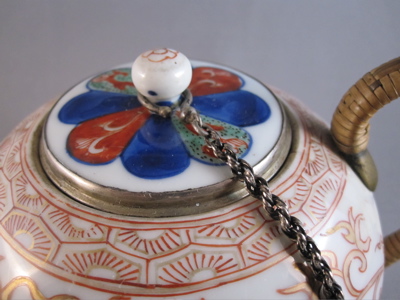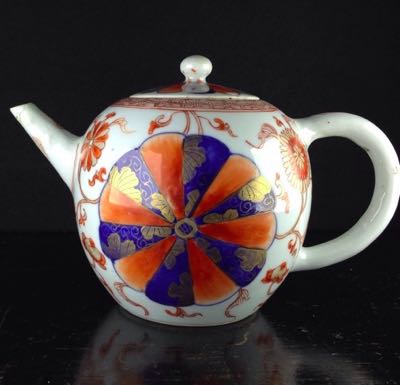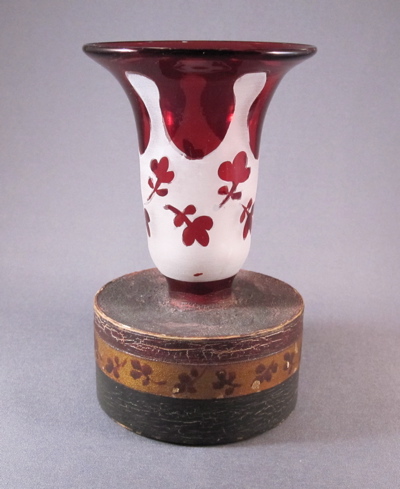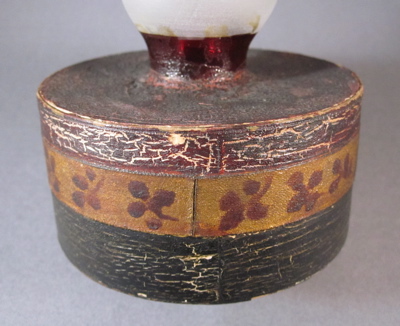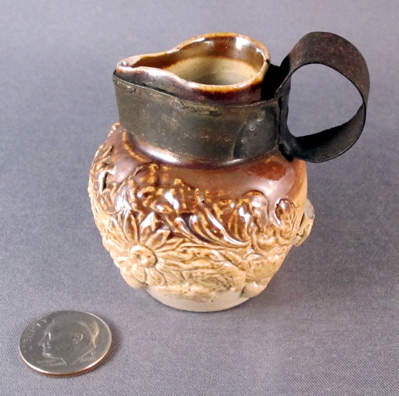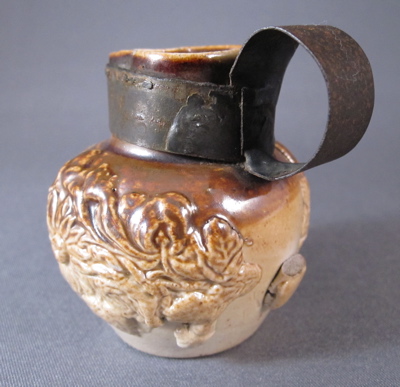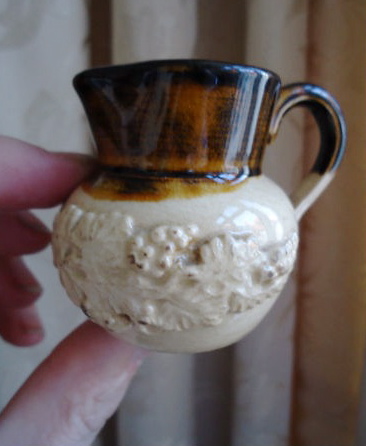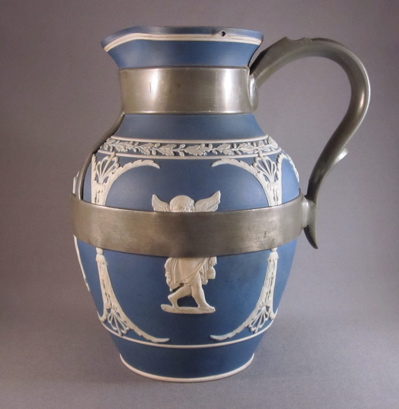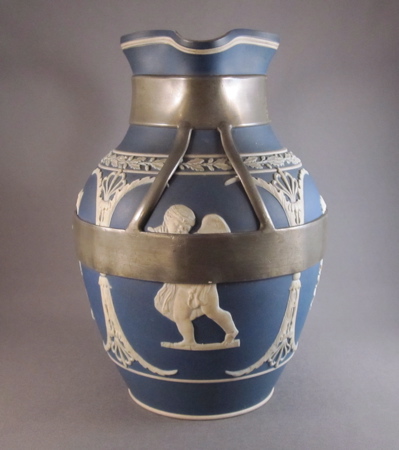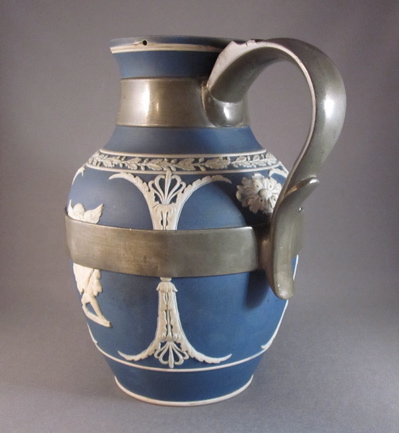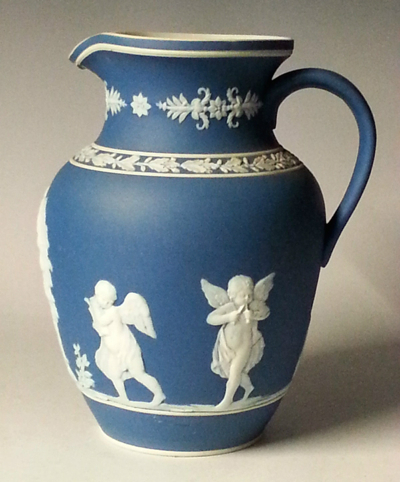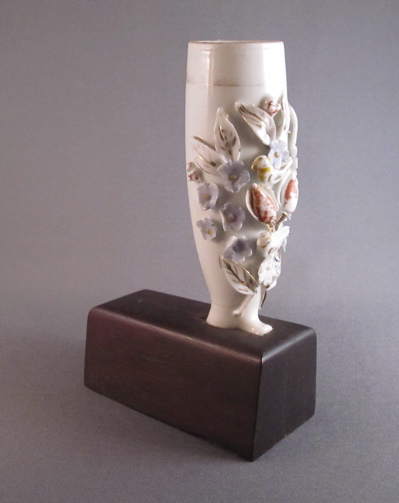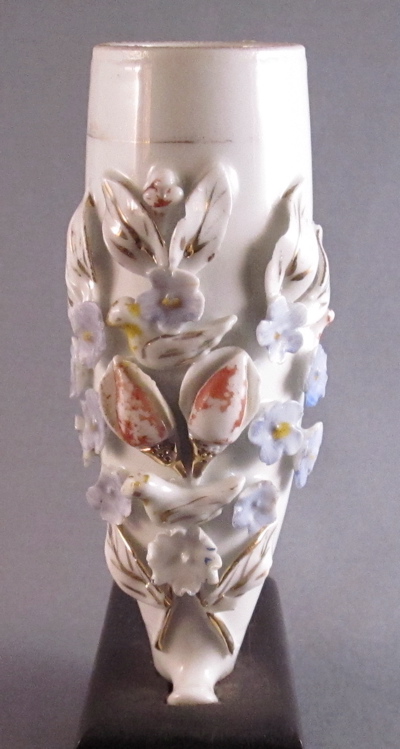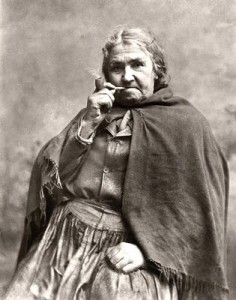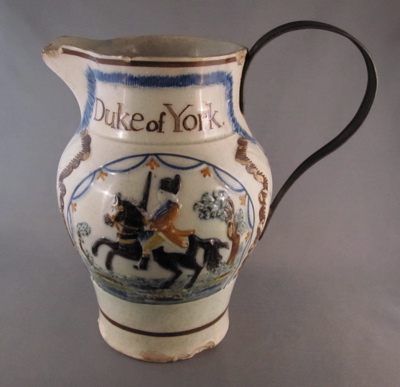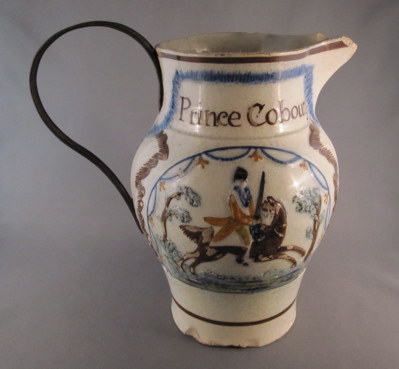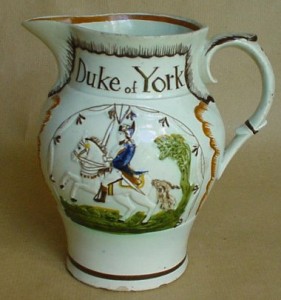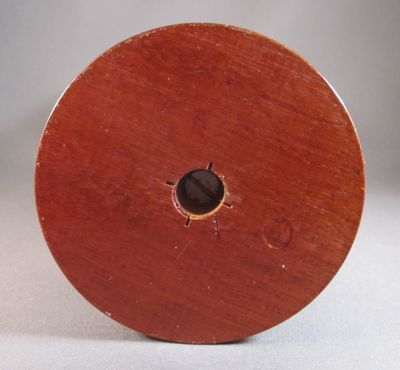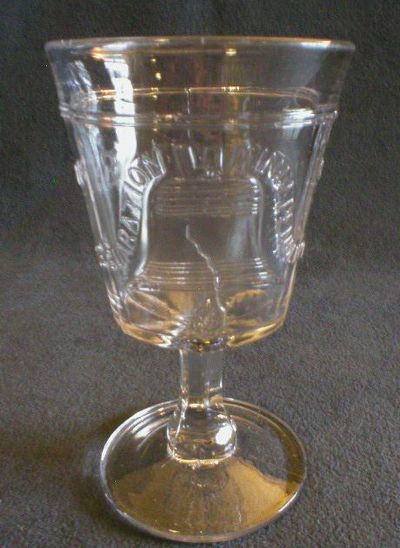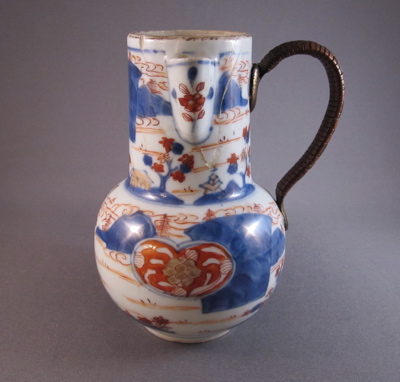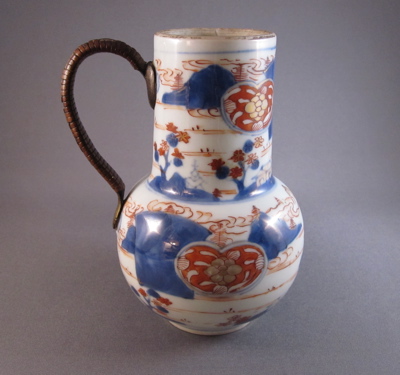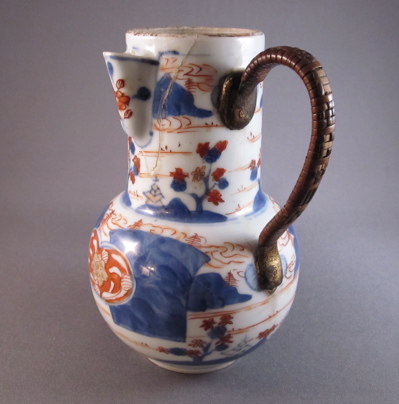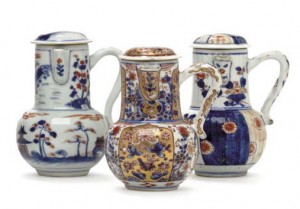I found this large soft paste bowl while vacationing in Kerala, India and carried it on my lap during the long flight home. I was hoping to find other antiques with interesting repairs throughout my travels to central and southern India, but I mostly found just broken ceramic pieces with chips, cracks and no repairs. But I am sure India is filled with more many examples of wonderfully repaired antiques and I look forward to finding some of them when I return.
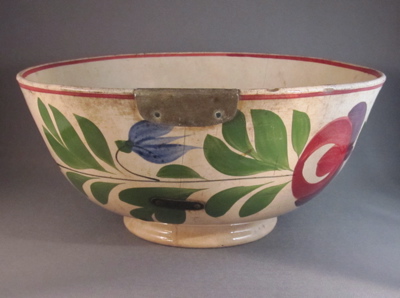
Bowl measures 10″ in diameter and is 4-1/2″ high.

A large chip on the rim has been covered up with a tin cuff and a long crack has been secured by means of a brass strap and rivets.
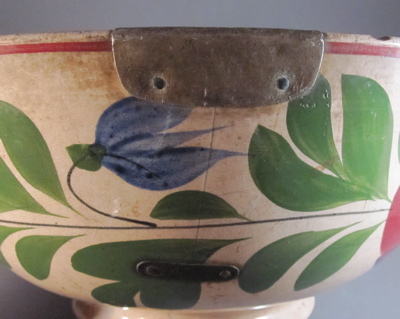
I believe this to be an English example of Gaudy Dutch ware, with a boldly painted variation of the “King’s Rose” pattern. Please see a coffee pot I posted earlier with a similar pattern.
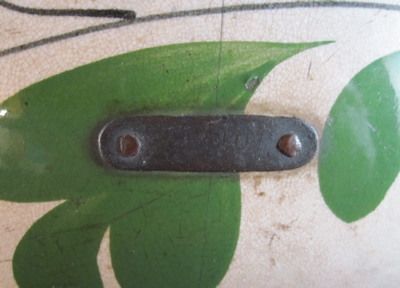
When I see multiple repairs on the same piece made from different materials, I am led to believe that the damage and subsequent repairs were done at different times.
